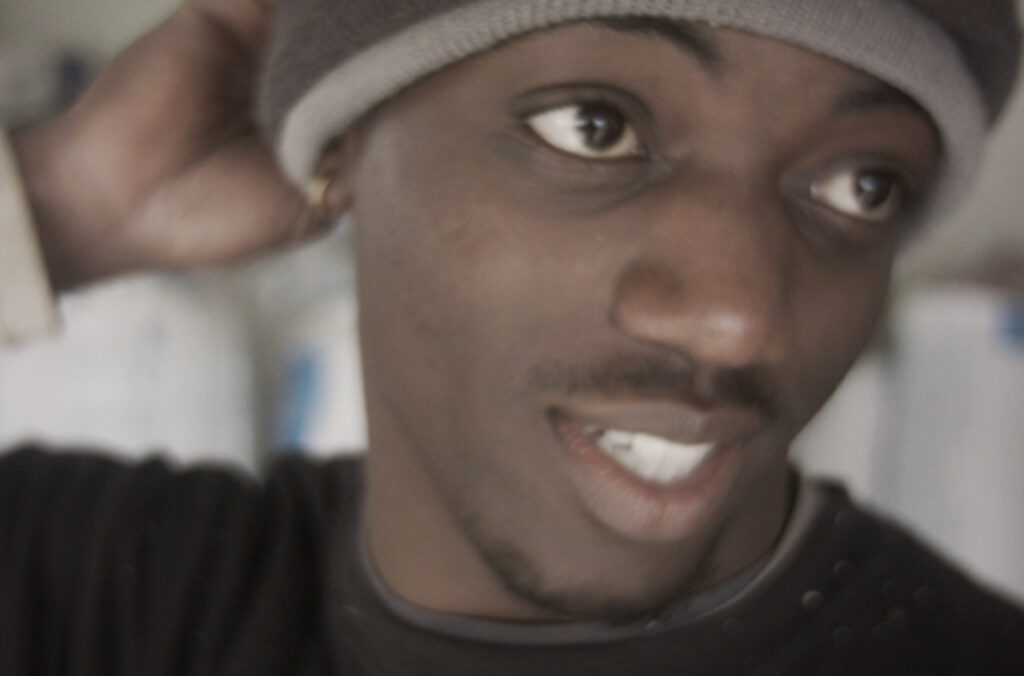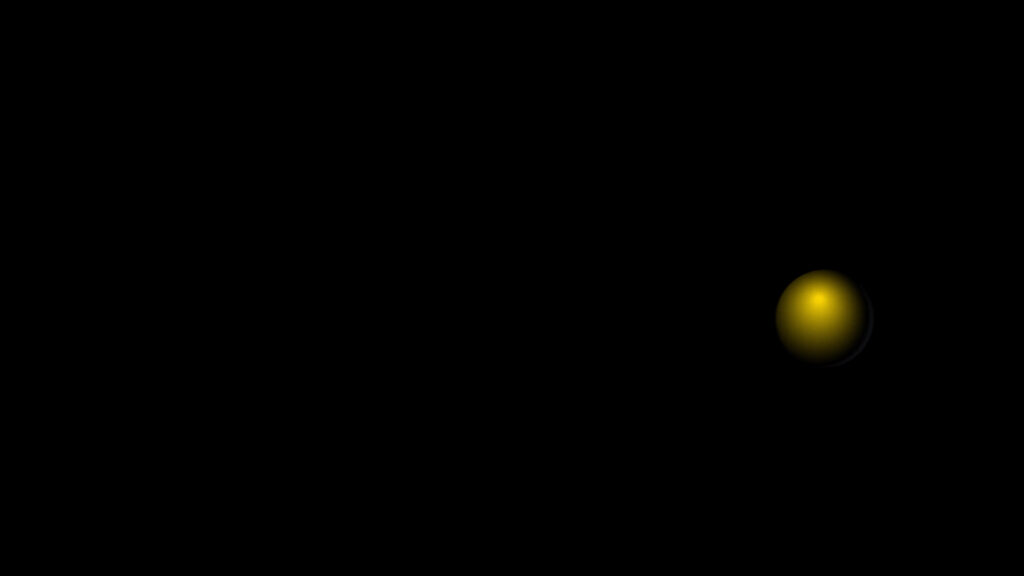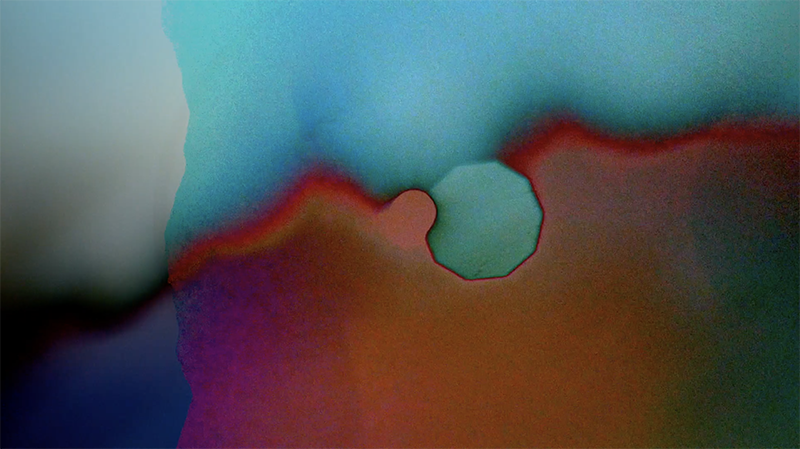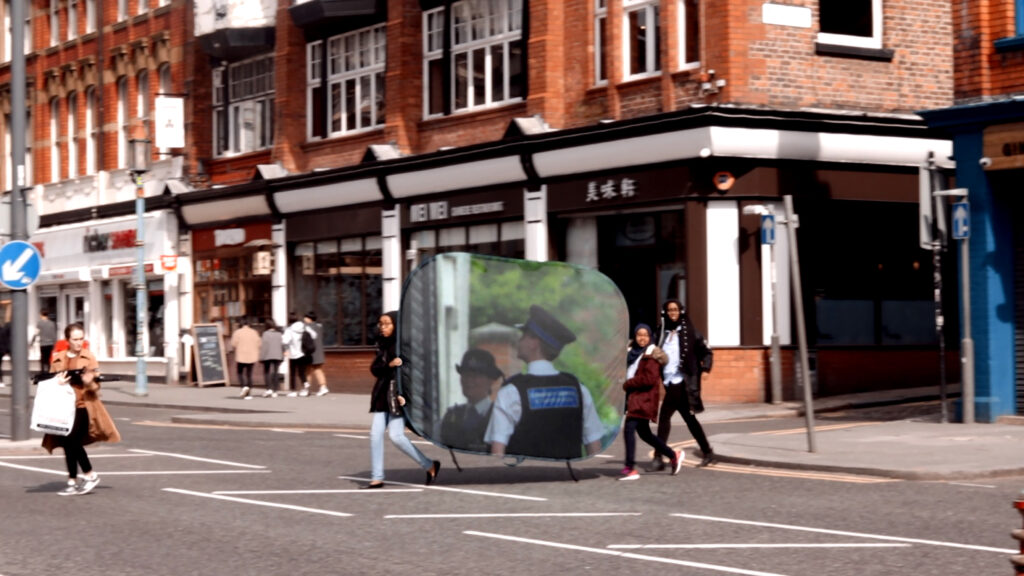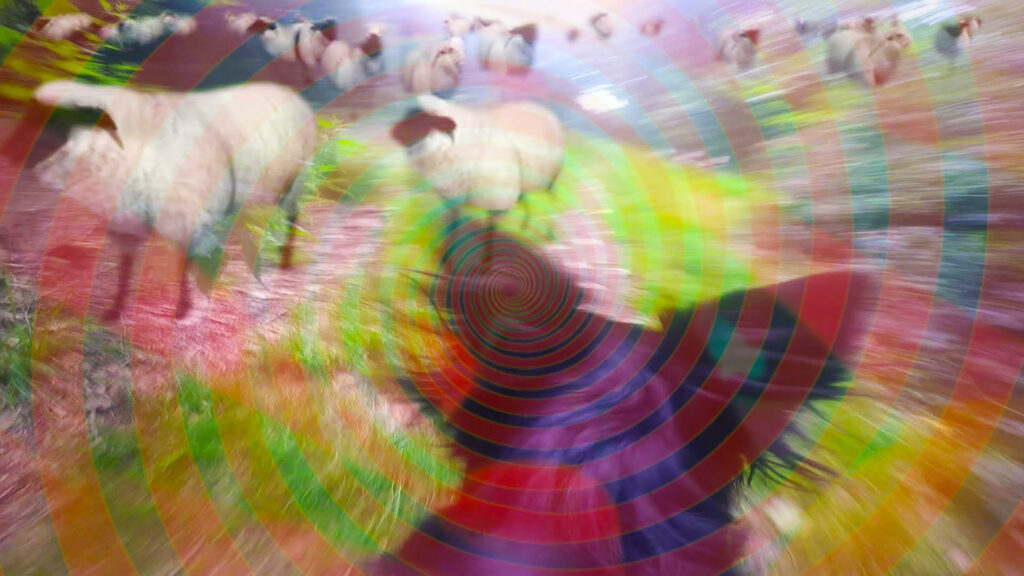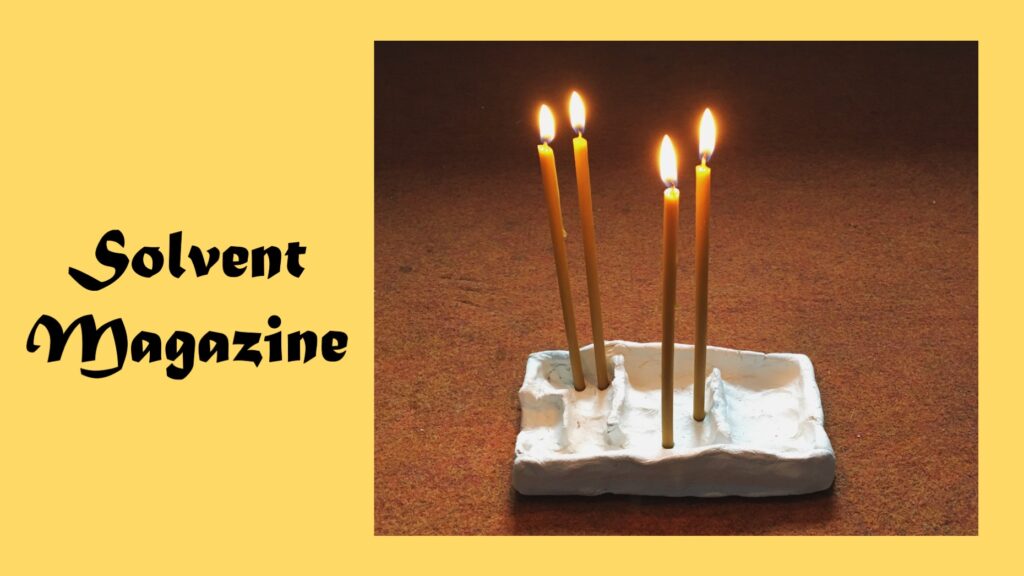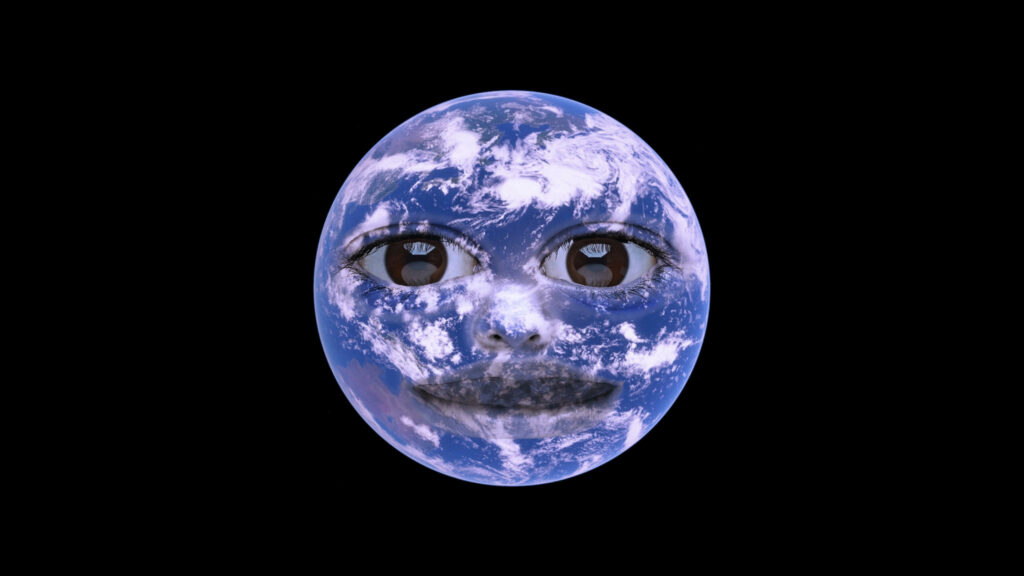Exhibitions
Artists present new and recent moving image work in exhibitions around Berwick-upon-Tweed, taking over historic buildings, empty shops and hidden corners of the town.
Bathing explores themes of contamination, cleanliness, and debility through performance and dance. It is an adaptation of a performance Staff developed that features a solo performer moving in and out of a shallow basin of water. Between the performer’s movements, the video intersperses images of oil, spit, fluid landscapes, and U.S. border patrol, with flashes of a dog lost to a blissful state of chaos.
The work draws on Staff’s research into the classical figure of the bather, chemical effects, drunken revelry, and the spiritello figures that commonly adorn European fountains. The performer’s continuous actions and gestures eventually lead to overexertion of the body. A fluid cross-contamination between substance, performer, and image occurs, bringing to mind the ways in which bodies absorb and release chemicals, hormones, and other agents—a means of survival for some and potentially lethal for others.
The video embraces feelings of anxiety induced by stagnant water and its pollution, while expressing ambivalence about the supposed opposition between inebriation and good health, suggesting that states of intoxication may be compared to a queer mode of being. However, while offering the toxic as a possible source of liberation from conservative notions of well-being and capacity, Bathing also asks us to consider the inherent privilege in celebrating states of disorder and from whom those privileges are commonly withheld.
A conversation between a therapist and their client unfolds as a yellow ball swings back and forth. Replicating simple animations of online EMDR videos used to treat Post-Traumatic Stress Disorder, Consensual Healing feeds Octavia Butler’s short story ‘Bloodchild’ through scripted therapeutic protocols, destabilising relations between coercion and consent, form and content, trauma and fiction.
Music by Juliana Huxtable; sound by Marco Gomez
Between the dizzying hallucinatory landscapes and circular images of a lens or porthole, Hopinka takes us to a world of dreams, spirits and myths, revealing the story of Xąwįska, the Indian Pipe Plant used by the Ho-Chunk to revive those who have fainted. With abstracted and inverted images Hopinka moves from an editing station into the landscape, illuminating the sense of losing oneself, of fear and renewal. —Ruth Hodgins
How Does an Invisible Boy Disappear? emerges from a nine-month collaboration with Liverpool Black Women Filmmakers, a new women’s film collective made up of young women from a Somali & Pakistani background. The film documents the group as they work together to create a thriller focusing on a teenage girl’s attempt to find a missing local boy. Comprised of candid footage captured during the workshop process, behind the scenes filming and archive footage of anti-racist organising in the aftermath of the Toxteth race riots, the film questions how modes of representation and societal structures are gendered and racialised.
Commissioned by Liverpool Biennial and supported by Tenderpixel, London
of Violence uses the structure of close-up pillow talk and casual camerawork to engage a dog in intimate digressions. The dog becomes an involuntary participant in human impositions—emotional, physical, linguistic and political.
Co-commissioned by Film London and Channel 4 for Random Acts
Lucy Clout presents a new body of work titled Solvent Magazine, including sculptural and video pieces made during her six-month residency with Berwick Visual Arts and BFMAF. An assemblage of parts that brings together research around close readings of bodies— diagnostic narratives, pleasure and ambiguity are used as ways to think about knowledge, evidence and queer reproduction.
Part-waiting room, part-publishing house, Solvent Magazine presents: a £23.00 USB microscope camera, the story of a temp’s discretion, a new design for privacy screen glass which mimics the saliva of a person with secure attachment style, two piss coloured Perspex doors and a layer of plastic to keep out distractions.
Agnieszka Polska’s unsettling perspective on humanity takes the form of an animated child-faced sun with melancholy eyes. Digitally sourced images paint a frantic image of a crumbling world. From a distance, the sun jokes about environmental issues and comments on the tumultuous times in which the world finds itself.
The film borrows its title from a poem by Polish poet of the realist/positivist style Maria Konopnicka (1842–1910). The poem ‘What the sun has seen’ recounts in a childish style the quotidian, peaceful rural activities and happy family life of the nation in the countryside, as observed by the sun on its daily journey across the sky. Polska offers her own dark, ironic version of the poem, dealing with contamination by information (information waste) and the role of the ‘helpless observer’ who, like the ‘Angel of History’ in the well-known adage by Walter Benjamin, can only look at the debris piled by lived time without being able to intervene.



